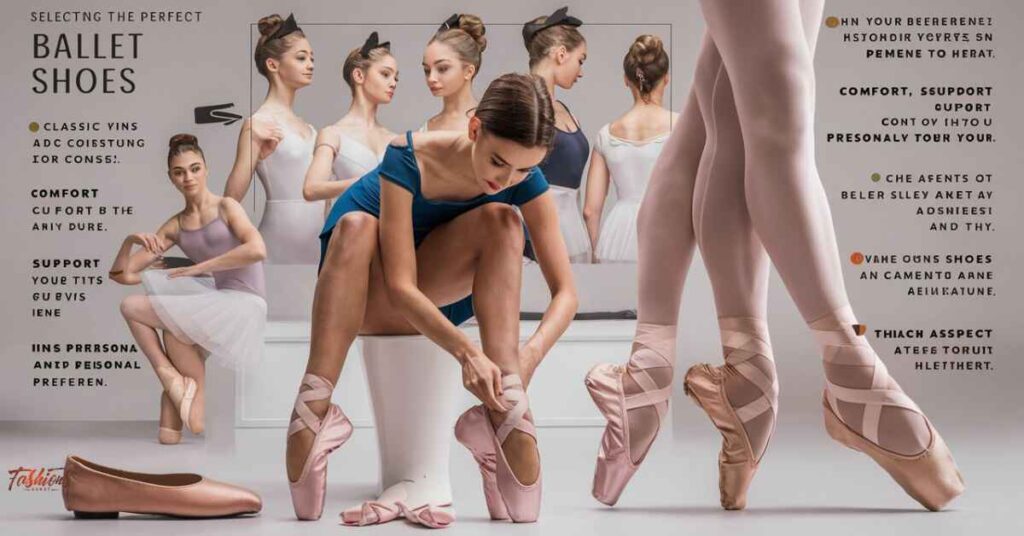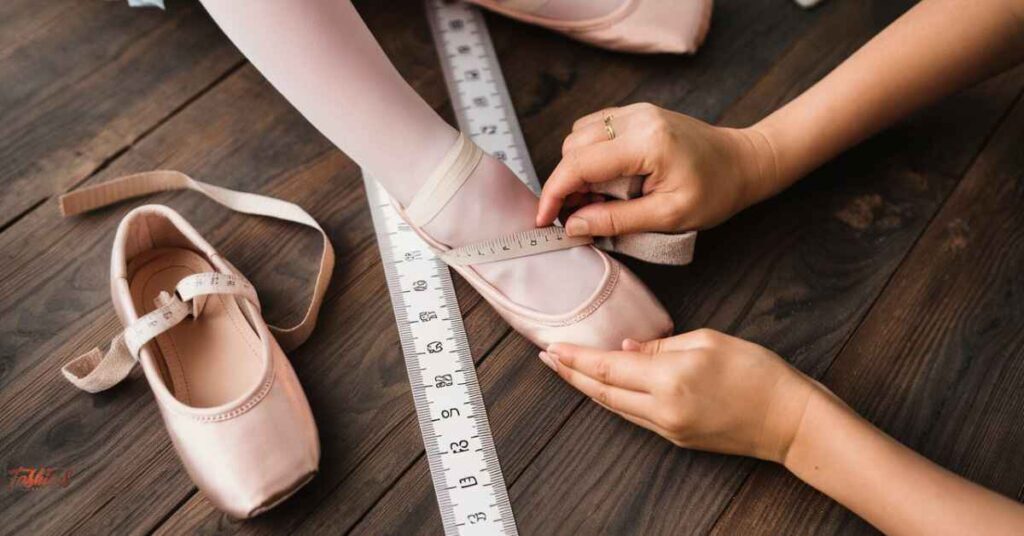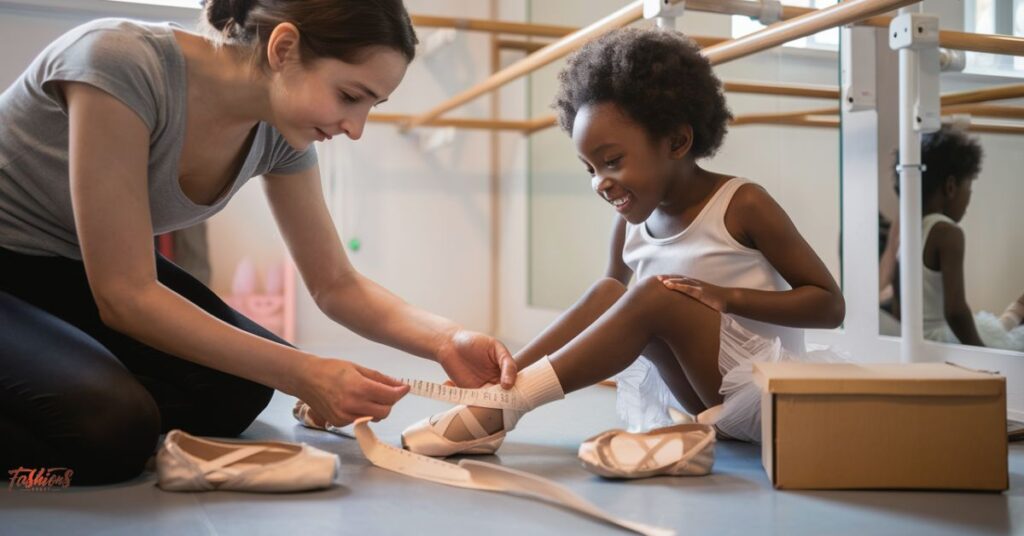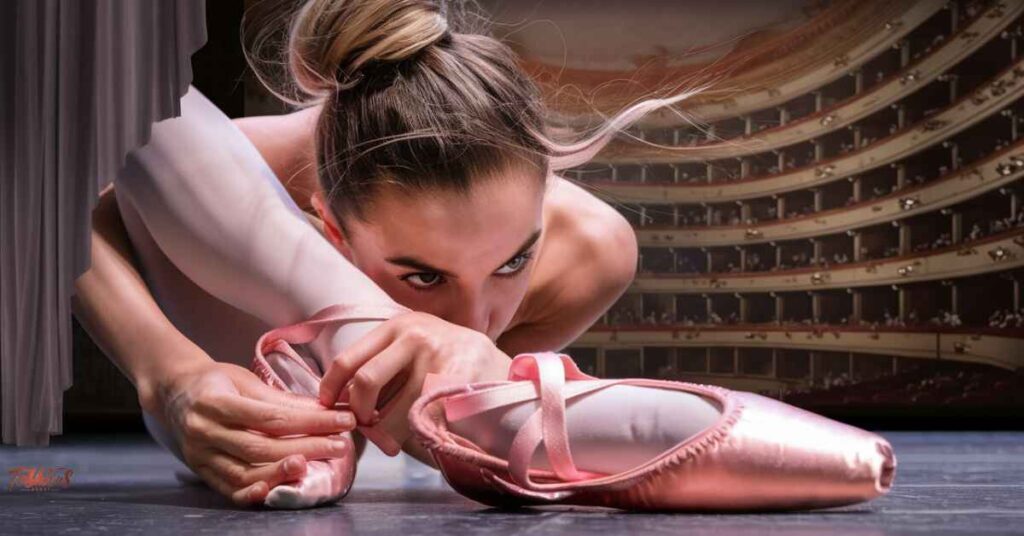Ballet shoes are not just footwear; they are essential tools for dancers, impacting both comfort and performance. Achieving the perfect fit is paramount, whether you’re a beginner or seasoned performer.
From the structured support of full sole shoes to the flexibility of split sole options, understanding how ballet shoes should fit is crucial. Explore factors for selecting ballet shoes. Get tips for a comfortable, secure fit in this comprehensive guide.
Types of ballet shoes
When it comes to ballet shoes, there are two main types: full sole and split sole. Each type offers unique features and benefits to cater to the needs of different dancers.
Full Sole Ballet Shoes
Full sole ballet shoes feature a continuous sole underneath the shoe, providing structured support for the dancer’s foot. Typically made of leather, canvas or suede, full sole shoes are ideal for beginners as they help build strength and muscle in the foot.
The solid sole offers stability and resistance, aiding in the development of proper technique and form.
Split Sole Ballet Shoes
Split sole ballet shoes feature a split sole under the ball and heel. This design enhances flexibility and showcases the dancer’s arch and foot line. Split sole shoes offer less structure, preferred by advanced dancers.
They provide enhanced flexibility and ease for executing correct foot technique. The absence of padding under the arch allows for a more natural movement of the foot, facilitating better articulation and expression in dance movements.
How to Choose Ballet Shoes
Selecting the right ballet shoes involves considering several factors to ensure optimal comfort and performance. Here are some essential tips to guide you through the selection process:

Consult with your dance teacher: Your dance instructor can provide valuable insight into the best type of ballet shoes for your skill level and foot shape.
Consider material and sole type: Decide whether you prefer leather, canvas, or suede material and choose between full sole or split sole options based on your dancing needs and preferences.
Try on multiple sizes: It’s essential to try on several sizes to find the perfect fit. Remember that ballet shoes should feel snug but not overly tight, with just enough room for your toes to lie flat.
Check for proper support: Ensure that the ballet shoes provide adequate support for your feet, especially around the arch and heel. The shoes should feel secure and stable during movement.
Read this blog:
How To Style Black Shoes?
Buying Ballet Shoes for Beginners
For beginners, purchasing the right ballet shoes is crucial for a comfortable and enjoyable dance experience. Here are some tips for buying ballet shoes for beginners:
Start with full sole shoes: Beginners typically benefit from the structured support offered by full sole ballet shoes. Leather or canvas materials are durable options that provide stability and help build foot strength.
Seek guidance from a professional: If possible, visit a dance store with knowledgeable staff who can assist you in finding the perfect pair of ballet shoes.
Consider future growth: While it’s essential for beginners to have properly fitting shoes, it’s also essential to consider potential foot growth. Choose a size that allows for some room to accommodate growth without compromising comfort or stability.
What Size Ballet Shoes Should I Buy?
Determining the correct size of ballet shoes is essential for optimal comfort and performance. Here are some guidelines to help you choose the right size:
Measure your foot: Use a tape measure to determine the length and width of your foot. Measure from the tip of your longest toe to the back of your heel and across the widest part of your foot.
Consult sizing charts: Most ballet shoe manufacturers provide sizing charts to help you find the right size based on your measurements. Be sure to follow the manufacturer’s guidelines for accurate sizing.
Try on different sizes: It’s essential to try on multiple sizes to find the best fit. Pay attention to how the shoes feel on your feet and make sure there is enough room for your toes to move comfortably.
How to Measure Width for Ballet Shoes
Measuring the width of your foot is crucial for selecting the right ballet shoes. Here’s how to measure width for ballet shoes:

Use a tape measure: Measure the widest part of your foot, usually around the ball area. Ensure that the tape measure is snug but not too tight.
Consult sizing charts: Compare your measurements to the manufacturer’s sizing chart to determine the appropriate width for your ballet shoes.
Try different widths: If you have wide or narrow feet, consider trying different widths to find the most comfortable option. Remember that proper width is essential for ensuring a secure and supportive fit during dance movements.
Width of a Ballet Shoe
The width of a ballet shoe plays a crucial role in achieving a comfortable and supportive fit. Here’s what you need to know about the width options available:
Different widths: Ballet shoes are typically available in multiple width options, ranging from narrow to wide. Common width designations include A, B, C, and D, with A being the narrowest and D being the widest.
Proper fit: It’s essential to choose a ballet shoe width that matches the width of your foot. A shoe that is too narrow can cause discomfort and restrict movement, while a shoe that is too wide may not provide adequate support.
Consult sizing charts: Most ballet shoe manufacturers provide sizing charts that indicate the corresponding width for each shoe size. Be sure to refer to these charts when selecting the appropriate width for your ballet shoes.
Fitting Ballet Shoes for Growing Feet
For young dancers with growing feet, finding the right fit for ballet shoes is essential for comfort and safety. Here are some tips for fitting ballet shoes for growing feet:

Allow room for growth: When selecting ballet shoes for children, it’s important to choose a size that allows for some room for growth. However, the shoes should not be excessively large, as this can increase the risk of tripping and injury.
Regularly check fit: As children’s feet grow, it’s essential to regularly check the fit of their ballet shoes and replace them as needed. Pay attention to any signs of discomfort or tightness, as these may indicate that it’s time for a new pair of shoes.
Consider adjustable features: Some ballet shoes come with adjustable features, such as elastic drawstrings or straps, which can accommodate changes in foot size more easily. These features can be particularly useful for young dancers with rapidly growing feet.
Fitting Ballet Shoes for Performance
When it comes to performances, having properly fitting ballet shoes is essential for showcasing your skills and technique. Here’s how to ensure a perfect fit for performance:

Snug but comfortable: Ballet shoes worn for performances should fit snugly but comfortably on the foot. They should feel secure and supportive without being too tight or restrictive.
Test for mobility: Before performing in ballet shoes, be sure to test their mobility by executing various dance movements. Ensure that the shoes allow for full range of motion and articulation of the foot.
Break in new shoes: If wearing new ballet shoes for a performance, be sure to break them in beforehand to ensure optimal comfort and flexibility. Wear them during rehearsals to allow the shoes to mold to your feet and minimize the risk of discomfort during the performance.
Also read:
What Does Og All Mean In Shoes?
Are Ballet Shoes True to Size?
The sizing of ballet shoes can vary depending on the brand, style and material. Here’s what you need to know about whether ballet shoes are true to size:
Varied sizing: Ballet shoes may run true to size for some individuals, while others may find that they need to size up or down. It’s depending on factors such as foot shape and width.
Consult sizing charts: To ensure the best fit, it’s essential to consult the manufacturer’s sizing chart and follow their guidelines for measuring your foot. This will help you determine the most accurate size for your ballet shoes.
Professional fitting: For the most accurate fit, consider visiting a professional dance store where knowledgeable staff can assist you in finding the perfect pair of ballet shoes. They can provide personalized fitting advice based on your individual needs and preferences.
Frequently asked questions
How tight should a ballet shoe be?
A ballet shoe should fit snugly, with minimal extra space, to ensure proper support and stability during dance movements. However, it should not be so tight as to cause discomfort or restrict circulation.
Should you buy ballet shoes a size bigger?
Buying ballet shoes a size bigger can lead to tripping hazards and discomfort. It’s best to choose a snug, properly fitting pair.
How do you know if ballet flats are too small?
If ballet flats pinch or squeeze your toes, they’re likely too small. Discomfort or difficulty moving indicates a poor fit.
What do good feet look like in ballet?
Good feet in ballet are arched, elongated and well-pointed. They exhibit flexibility, strength and alignment.
Do you wear socks under ballet shoes?
No, socks are typically not worn under ballet shoes for a better feel of the floor. Bare feet offer more control and flexibility.
How do I know my ballet shoe size?
To determine your ballet shoe size, measure the length of your foot in inches. Then, refer to the manufacturer’s sizing chart for the corresponding size.
Will ballet flats stretch?
Yes, ballet flats made of leather or canvas tend to stretch slightly with wear. Stretching can provide a more customized fit over time.
Conclusion
Achieving the perfect fit for ballet shoes is essential for dancers of all levels. Understanding the various types of ballet shoes, sizing considerations and fitting techniques is crucial for comfort, performance, and injury prevention. Whether you’re a beginner or a seasoned performer, proper-fitting ballet shoes enhance your dancing experience.
They enable you to fully express yourself on the dance floor. Remember to consult sizing charts, seek professional fitting assistance when needed, and prioritize comfort and support. Dance confidently, agilely, and gracefully with the right ballet shoes. Your footwear supports every movement, ensuring a seamless performance.







